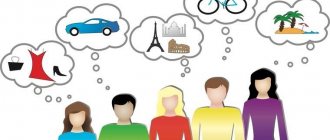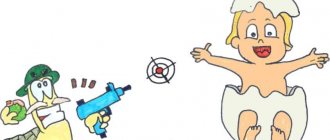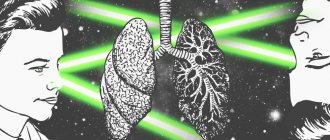What is frustration
Literally, frustration is translated as “deception, false expectation.” This is a negative state caused by the inability to satisfy current needs. A person’s experience and behavior are determined and caused by difficulties that he cannot overcome on the way to a goal or in the process of solving problems.
Manifestations of frustration are individual in nature. Some of the most popular reactions include:
Situations that cause a state of frustration are called frustrating. Obstacles that make it difficult to achieve a goal and cause a state of frustration are called frustrators or frustrating influences. The effect that a person experiences when trying to adapt to frustrating conditions is usually called frustration tension. The higher the tension, the more strongly the functions of the neurohumoral system are activated. Thus, the greater the stress (it is difficult for a person to adapt), the greater the power of the body’s psychophysiological reserves. He is gradually depleted.
The influence of mental states on a person
Positive states , colored in major emotional tones, charge with energy, increase activity, make it possible to act productively, with full dedication, help to reveal abilities, sharpen perception, and stimulate creativity.
Negative states , on the contrary, depress a person, deprive him of vigor, efficiency, and interest in life. They are accompanied by mental tension and are determined by the following factors:
- lack of complete or reliable information necessary to develop a positive model of behavior; Thus, the indecisiveness of a young man in love is explained by his fear of being rejected by an unfamiliar passion;
- the maximum consumption of energy reserves, which often happens when one department employee is entrusted with the functions of both a think tank and a performer of labor-intensive physical processes;
- the inconsistency of overwhelmed feelings, when you want it, and it pricks, and it’s scary, and it’s pleasant.
Special conditions are characterized by a change in a person’s consciousness. They can be natural, such as sleep, in which the perception of the outside world is turned off at the will of the individual. But other altered states can be imposed on a person from the outside. These include suggestion and artificial sleep, or hypnosis.
In such states, a person can be manipulated, forcing him to believe in any information, imposing behavior patterns that are unusual for him. This is exactly how commercials affect the psyche of TV viewers. Another thing is arbitrary self-hypnosis and meditation. Such states help solve problems of self-knowledge and self-regulation.
Indicators of mental health can be euphoria and its antipode – dysphoria . The first represents an inexplicable emotional upsurge, for example, uncontrollable gaiety or extraordinary carelessness. Often such conditions are caused by drugs or are reactions to prolonged stress.
The second - dysphoria - is an unreasonably minor mood with an admixture of angry irritability. In medicine, dysphoria is considered a sign of poor mental health. In particular, it is a symptom of certain psychopathy, epilepsy, and brain damage.
Theories of frustration
The issue of frustration has not yet been fully studied. I suggest you familiarize yourself with the most popular theories that name the main defensive reaction that accompanies frustration.
Frustration - aggression
D. Dollard's theory. According to the author, if a person shows aggression, then one can assume that he is frustrated. The stronger the desire for an unattainable goal, the stronger the aggression. Frustration is stronger the more often it is repeated and the lower the tolerance to it.
Frustration - regression
Theory by K. Lewin, R. Barker and T. Dembo. The main defense mechanism is regression, that is, the personality reproduces previously learned patterns of behavior (rollback to previous age periods). Often this mechanism is combined with others.
Frustration - fixation
N. Mayer's theory. Human activity loses its purpose. Behavior becomes aimless and repetitive. That is, a person fixes attention on something narrow and not related to the goal, fixates on things not related to frustration.
Causes of frustration
The state of frustration is caused by obstacles that interfere with the activity necessary to achieve the goal. We are talking about prohibitions, physical and moral obstacles, contradictions. There are obstacles:
- physical (arrest);
- biological (aging, disease);
- psychological (fear, lack of knowledge);
- socio-cultural (norms, taboos of society).
Strong motivation to achieve a goal and significant obstacles along the way are two main conditions for frustration. As a result, a person either activates all his forces and looks for alternative ways to achieve this goal (not always rational, often impulsive), or abandons the goal (achieves it partially or in a perverted way).
The simplest and most common option is addictive (dependent) behavior, but this is the wrong response. Addictive behavior in response to frustration can be a variant of learning (parents set a personal example), compensatory behavior, or inadequate psychological defense.
Frustration factors
Among the negative factors that can cause frustration, it is customary to distinguish between external and internal. External factors include:
- interpersonal conflicts, including those turning into intrapersonal ones (contradiction between personal and social);
- incorrect upbringing conditions or a destructive upbringing style (a harbinger of conflicts based on disharmony of personal and social values and orientations);
- dissatisfaction with oneself in work or other areas (an unsatisfied need for self-actualization caused by a feeling of incomplete disclosure of personal potential or awareness of the wrong path).
Among the internal causes of frustration are various types of internal conflicts:
- Having two desired goals, that is, a person chooses between two positive events. But he cannot achieve them at the same time. Whatever need a person chooses, he will find himself in a gain and in a state of mild frustration at the same time.
- The choice of the least evil, that is, the choice between two negative situations. Such a conflict causes the most severe frustration, because in any case a person will be a loser. Often a person tries to avoid making a decision and escapes reality. When it is impossible to escape, he displays aggression and anger.
- Choice between positive and negative goals. The most common conflict is the so-called struggle between good and evil (the light and dark sides of the soul). Causes moderate frustration.
How are mental conditions diagnosed?
The study of human states involves identifying their structure, nature, mode of occurrence, dynamics, adequacy, intensity.
The main ways to study mental states:
- numerous questionnaires;
- observations;
- projective techniques, for example, the Luscher color preference test;
- experiments that reproduce certain situations.
Such studies help individuals correct and control their conditions. This is especially true for mobilizing forces in extreme situations: during exams, during sports competitions, military operations, industrial force majeure. It is equally important to recognize destructive conditions, such as a mental attack or an obsessional attack, in time.
LiveJournal
- Related Posts
- Psychology of human activity
- Psychology of nutrition
- Identification in psychology
« Previous entry
Prerequisites for frustration
Frustration does not occur immediately; it is preceded by several characteristic stages, thanks to which a state of frustration can be suspected and prevented:
- accumulation of dissatisfaction as a result of repeated failures;
- the depth of dissatisfaction (depends on the severity of the need and the frequency of failures);
- emotional excitability as an individual personality trait (the more pronounced, the faster frustration arises);
- level of aspirations and habit of success (for people with high demands and accustomed to success, even a minor obstacle can cause frustration);
- the stage at which the obstacle appeared (if difficulties arise at the very end of the activity, near the goal, then the frustration is stronger).
Frustration emotions (structure of frustration)
The emotions that most often accompany frustration are not always appreciated. But it is precisely the manifested emotions that can be considered symptoms, signs indicating the true cause of frustration.
- Resentment. Occurs when a person’s sense of dignity is violated, undeserved (in the opinion of the individual) humiliation. For example, with reproaches, insults, deception, incorrect remarks and accusations. Resentment can be stored in a person’s subconscious for a long time, depleting him. Or force you to consciously develop a plan of revenge, to show aggression.
- Disappointment. Occurs when expectations are not met. This is dissatisfaction and displeasure due to an unfulfilled promised or expected event. The more was promised or the stronger and more desirable the expectation, the greater the person’s disappointment.
- Annoyance. This is regret with a hint of anger, caused by one’s own failure or the failure of friends or a significant group (for example, a football team).
- Anger. Indignation, indignation, anger because of one’s own powerlessness in the face of obstacles that arise along the way.
- Fury. Behavior full of aggression. Rage can be noble (war), constructive (debate), destructive (violence, senseless cruelty).
- Sadness. Loss of something or someone. Feeling of loneliness due to the loss of prospects for achieving a goal or communicating with a person. We are talking about anything personally significant.
- Dejection. It consists of a feeling of hopelessness from the inability to achieve a goal, boredom and sadness, loss of interest in everything that is happening. Dejection is accompanied by awareness of the prospect of an unfavorable outcome of the current process. If the process has already ended and the forecast has been confirmed (the person has failed), then a feeling of hopelessness arises, which is accompanied by other emotions (disappointment, sadness, grief, despair).
Thus, frustration is a reaction to life difficulties that interfere with achieving the desired goal. It is reflected in the emotional, cognitive and behavioral spheres.
Stages of frustration
Frustration manifests itself in several stages. Each of them is characterized by its own characteristics of individual behavior:
- At the first stage, behavior is organized and motivated.
- The person begins to lose self-control. Voluntariness weakens, but does not disappear completely. There is a glimmer of hope that the situation will be resolved. The behavior is motivated, but not purposeful (disorganized).
- At the third stage, the connection between motive and behavior is completely lost. Individual actions are still endowed with a goal, but it is not connected with the first motive (behavior not for something, but as a result of something).
- The fourth stage is characterized by a complete loss of self-control. The person does not even realize the meaninglessness, disorganization and unmotivation of his own behavior.
Behavioral patterns
It is impossible to say unequivocally what frustration means, since the condition manifests itself differently in each individual. For one, this is expressed in apathy and complete reluctance to do something, for another – in aggression, which is directed at oneself or other people.
Frustration can manifest itself in flight. In this case, the person avoids situations that cause negative emotions. In some cases, the substitution mechanism is triggered, and the individual transfers one need to another.
Sometimes a person in such a state begins to look for positive aspects. He tries to convince himself that failure will only benefit him.
Reaction to frustration
American psychologist and psychotherapist Saul Rosenzweig identified 3 types of response to frustration:
- Extrapunitive (occurs in 50% of cases). An internal “instigator” awakens in a person, which encourages him to look for those to blame in the outside world (people and circumstances). As a result, the individual has a goal to achieve what he wants at any cost. The emotional background is characterized by stubbornness, anger, aggression, annoyance. Behavior becomes rigid, primitive and previously learned forms of behavior predominate, for example, children's whims.
- Intrapunitive (occurs in 27% of cases). A person is accompanied by a feeling of guilt; he blames himself. This ends with auto-aggression (aggression directed at oneself). The emotional background and behavior are characterized by isolation, anxiety, and silence. A person returns to primitive forms, reduces the level of aspirations, limits himself in activity and satisfaction of desired needs (“You couldn’t even achieve this, you don’t deserve anything at all”).
- Impulsive (occurs in 23% of cases). The person does not blame anyone, he accepts what happened. At the same time, he understands that everything can be solved, it’s just a matter of time and effort. Failures are inevitable, but they can and must be overcome.
In the course of studying the phenomenon of frustration, some features of the response were identified depending on gender and characteristics of the nervous system:
- Men are more likely to react extrapunitively, and women more often intrapunitively.
- People with a strong type of nervous system react extrapunitively, people with a weak temperament react intrapunitively.
- People with a high level of intelligence are more likely to react impunitively and intrapunitively.
- Extroverts, emotional and anxious individuals react extrapunitively, introverts with an average level of anxiety react intrapunitively, introverts with a high level of anxiety also intrapunitively, but not always.
Thus, the following types of response to frustration can be distinguished:
- excessive, chaotic and aimless activity (arousal);
- apathy (idleness, passivity);
- aggression and destruction (the most common reaction);
- stereotypical behavior;
- defense mechanisms.
Defense mechanisms are:
- adequate and inadequate (productive and destructive for the personality, its development);
- direct and indirect (on the frustrating situation and its objects or on objects that go beyond the situation);
- protective and perseverative (help the individual achieve integrity or stereotypical actions that do not lead to success);
- specific and nonspecific (defensive or perseverative reactions corresponding to the situation or reactions of a generalized nature, for example, fatigue).
Basic mental states. Properties of mental states
The most common and typical mental states inherent in most people in their daily and professional life are the following states:
Optimal working condition – ensures maximum performance of activities taking place at an average pace and intensity.
Properties of the state: increased concentration, active thinking, sharpened memory and the presence of a goal.
A state of intense work activity – occurs when working in extreme conditions.
Properties of the condition: mental stress caused by the presence of a goal of increased importance or increased requirements, strong motivation to achieve the desired result, increased activity of the entire nervous system.
The state of professional interest plays a vital role in job performance.
Properties of the state: conscious significance of professional activity, desire and desire to learn as much information as possible about the work being performed, concentration of attention on objects that are associated with the activity. In a number of cases, there is an activation of creative potential, a sharpening of perception, an increased ability to repeat what has already been learned, and an increased power of imagination.
Monotonia is a condition that develops under long-term and regularly repeated loads of medium or low intensity, as well as under repeated monotonous information.
Properties of the state: indifference, decreased concentration, boredom, impaired perception of received information.
Fatigue is a state of temporary decrease in performance that occurs during prolonged and high loads. Associated with exhaustion of the body.
Properties of the condition: decreased motivation to work, dysfunction of memory and attention, increased processes of central nervous system inhibition.
Stress is a state of prolonged and increased tension, which is associated with a person’s inability to adapt to the demands of the environment. Here, environmental factors play a major role, exceeding the human body’s ability to adapt.
Properties of the condition: mental stress, feelings of anxiety, ill-being, often apathy and indifference. In addition, the adrenaline reserves that the body needs are depleted.
A state of relaxation is a state of recuperation, relaxation and calm that occurs during autogenic training or, for example, prayers or reading mantras, etc. The main reason for this condition is the cessation of any strenuous activity by a person at all.
Properties of the state: a feeling of warmth spreading throughout the body, a feeling of peace and relaxation at the physiological level.
The sleep state is a special mental state characterized by the disconnection of a person’s consciousness from external reality. It is interesting that the sleep state has two distinct phases that constantly alternate - slow-wave sleep and fast-moving sleep. Both of them can often be considered as independent mental states. And the process of sleep itself is associated with the need to systematize the flows of information that were received during wakefulness, as well as the body’s need to restore its resources.
Properties of the state: loss of consciousness, immobility, temporary activity of various parts of the nervous system.
The state of wakefulness is the opposite of the state of sleep. In a calm form, it can manifest itself in activities such as, for example, watching a movie, reading a book, listening to music. In a more active form it manifests itself in physical exercises, work, walks, etc.
Properties of the state: average activity of the nervous system, absence of pronounced emotions (in a calm state) or, conversely, violent emotions (in an active state).
Let us repeat that the above mental states are typical for most people. Any relationship between these conditions, as well as the dynamics of the process of their development, are of utmost importance, both in a person’s ordinary life and in his professional activities.
Based on this, mental states can be safely called one of the subjects of study in various areas of psychological science, such as general psychology, developmental psychology, personality psychology, psychology of motivation or occupational psychology.
Throughout time, people have tried to understand the essence of mental states, and these attempts do not stop even in our time. The reason for this is, perhaps, that a person and the characteristics of his personality are a great mystery both for ordinary people and for scientific minds. And one cannot help but say that today enormous progress has been made in the study of human personality, which boldly continues its path forward. But it is likely that this riddle will never be completely solved, because nature in any of its forms is truly incomprehensible.
We also recommend reading:
- Storytelling
- Ability to understand emotional state
- Feelings, emotions and sensations: the first step to profiling
- Temperament types
- Eric Berne "People Who Play Games" - summary
- Thanatotherapy: would you like to sleep in a coffin?
- How to learn to change your condition
- Mental processes: types and brief description
- The need-information theory of P. V. Simonov
- Methods of mental self-regulation
- Bipolar disorder: definition, causes, episodes, treatment
Key words:1Self-knowledge
Popular protection mechanisms
Among the mechanisms of psychological defense in case of frustration, retreat, aggression, compromise and substitution are most often used. I propose to consider in more detail the forms of each of them.
Retreat
Retreat takes different forms:
- The most popular option is to imagine achieving a goal using your imagination. In his imagination, a person overcomes all obstacles with dignity, which smoothes out negative experiences in real life. Sometimes it can happen unconsciously, expressed in dreams.
- Another popular retreat option is nomadism. Most often we are talking about moving from one city to another, frequently changing location. Less often - other external changes that do not solve internal problems.
- Regression. The person returns to childish behavior. This can continue until such reactions come into irreconcilable conflict with reality.
- Crowding out. Over time, a person really forgets unpleasant events and emotions.
- Avoidance. A person avoids difficult situations, important tasks, and conflicts as best he can and as much as he can.
Aggression
Aggression makes itself felt in all forms and types. The personality is overcome by the need to eliminate tension caused by certain conditions. As a result, behavior becomes directed:
- to punish the offender;
- eliminating it from the life of the individual;
- humiliating or harming the offender;
- maintaining self-esteem in any way.
The reaction of aggression includes revenge (including inadequate, for example, causing harm to close people of the target of revenge), affective behavior (touchiness, negativism, stubbornness, emotional instability), complaint (seeking empathy and support in a conflict situation). In rare cases, aggression takes an internal direction. Then there is excessive self-criticism, self-humiliation, addictive behavior, and suicidal tendencies.
The choice of form of aggression (verbal or physical, direct or indirect) depends on the individual’s experience, upbringing, and external conditions. Under certain circumstances, a person is able to control aggression and transform it into at least indirect aggression.
The most common variant is indirect aggression with object replacement. Simply put, a frustrated person finds a scapegoat. The second most popular option is self-affirmation through the failures of other people, self-justification through comparison with those whose lives are even worse.
Compromise and substitution
This means the formation of opposite reactions to the desired needs. For example, this is how moralists and moralists, fighters for morality, appear. In fact, this is a reaction to the inability to follow the behavior that they condemn because of this impossibility.
The second substitution option is projection, which manifests itself as suspicion. A person attributes to other people those qualities and characteristics of behavior that he cannot, but wants to follow.
Compromise forms also include sublimation and rationalization. Read more about this in the article “Mechanisms of psychological defense of the individual.”
Overcoming Frustration
- In order to adequately survive the state of frustration, you need to pay special attention to it at the beginning, when the frustration has just become noticeable. It is at this moment that a person commits rash, chaotic, meaningless actions - both aimed at achieving the primary goal and those far from it. The main thing is to survive aggression and depression, to calm these moods in yourself. Self-regulation techniques are suitable for this.
- The second step is replacing the primary goal with an alternative, but more accessible one. Or considering the reasons for failure and making a plan to overcome them. It is better to first analyze the situation. If it turns out that it is really impossible to overcome the difficulty (there are too many objective factors that do not depend on the individual), then it is recommended to choose a different goal or delay achieving the previous one if external conditions may change over time.
The state of frustration makes you feel inferior. In response to this, a person usually reacts with defense mechanisms or excessive activity (overcompensation). A third option is also possible - consciously overcoming a traumatic situation.
Features of frustration behavior are described through motivation and organization. The first factor presupposes a meaningful and promising connection between behavior and the motive (need) that provokes frustration. Organized behavior presupposes that it is endowed with at least some purpose, not necessarily leading to the satisfaction of the primary motive that caused the frustrating situation. The combination of these parameters determines the nature of behavior. For example, it can be motivic and organized, or motivic but not organized, and so on.
Concept and groups of mental state
Definition 1
A mental state is a relatively stable organization of the structure of mental components that are responsible for the function of an active relationship with the surrounding reality, where a specific situation is presented at a certain moment.
The human psyche is very complex and diverse during its manifestation. There are three groups that distinguish mental phenomena, they are as follows:
- Mental processes are processes that are responsible for the internal state of a person.
- A mental state is a stable level of mental activity, which can manifest itself in increased or decreased activity of a person.
- Mental properties are a stable formation that provides a certain level responsible for the quality and quantity of work performed, behavior, of a typical person.
Mood can be classified as a mental state, but it is an independent mental process that contributes to the emergence in the mind of a state with emotional overtones. Mood has six features, such as: polarity, changes in mental state and mood in general, experience from the influence of the environment on a person, individual mental processes, external expression and mood of a person (emotions), chain reaction (a bad or good mood is transmitted from one person to another).










